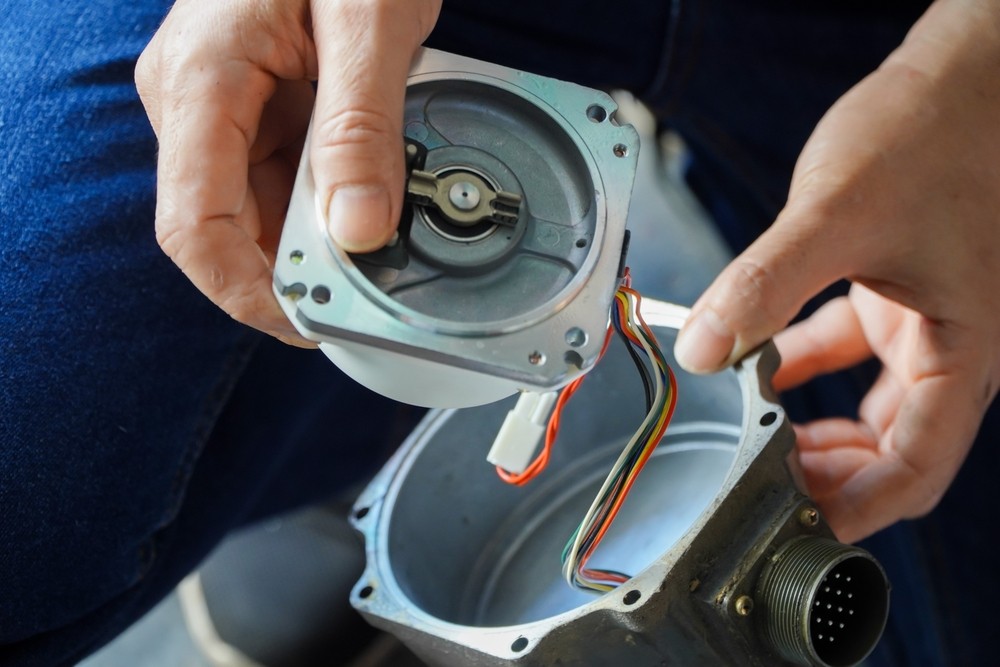Maintaining Momentum: Maintenance Essentials for Servo Motors and Drives

In today’s automated factories, servo motors and drives play a central role in ensuring precise, reliable machine operations. But like any mechanical or electronic device, servo motors and drives are susceptible to wear and tear. When failures occur, the consequences can be severe.
The good news: A proactive approach to preventive maintenance can significantly reduce the risk of unexpected breakdowns. By following recommended maintenance procedures, you can ensure servo motors and drives operate at peak performance for an extended lifespan.
Best practices for servo motor maintenance
- Inspection: Regular visual inspections are the foundation of any effective servo motor maintenance program. How often you perform inspections will depend on the specific operating environment. Generally, more frequent inspections are necessary in harsh or demanding environments. During inspections, pay close attention to signs of wear, leaks, loose connections, or other common issues.
- Records: Don’t underestimate the importance of detailed maintenance records. Documenting your inspection findings — including dates, observations, and any corrective actions taken — allows you to track trends and identify potential problems before they escalate.
- Cleanliness: Maintaining a clean environment is crucial for servo motor health. Dust, dirt, and debris can build up on the motor exterior, obstructing airflow and hindering heat dissipation. Use compressed air (avoiding high pressure that can damage components) to remove dust buildup regularly. When cleaning, follow the manufacturer’s recommendations to avoid using harsh chemicals that could damage the motor.
- Lubrication: Proper lubrication is essential for minimizing friction and wear in servo motors. Use only lubricants recommended by the manufacturer, and strictly adhere to recommended lubrication schedules and quantities. Over-lubrication can be just as detrimental as under-lubrication.
- Environment: Environmental factors such as temperature, humidity, and vibration can all affect servo motor performance and lifespan. Keeping the operating environment within the recommended specifications will help to ensure optimal performance and longevity. If necessary, employ environmental control measures such as cooling systems or vibration dampeners.

Best practices for servo drive maintenance
- Monitor key performance indicators (KPIs). Most servo drives are equipped with monitoring capabilities that track important performance metrics such as temperature, torque, and current. Make it a habit to regularly review these KPIs and establish warning thresholds. If a KPI exceeds its designated threshold, investigate the cause and take corrective actions before a serious failure occurs.
- Maintain cooling systems. Many servo drives rely on internal fans or external cooling systems to maintain proper operating temperatures. Ensure the cooling system is functioning properly by cleaning dust filters and verifying airflow. If your drive uses coolant, check the coolant level and condition regularly, following the manufacturer’s recommendations for replacement intervals.
- Tighten connections. Over time, electrical connections can loosen due to vibration or thermal cycling. Regularly check all electrical connections, following the manufacturer’s recommended torque values. Loose connections can lead to performance issues and potential safety hazards.
- Update software. Servo drive manufacturers periodically release software updates to improve performance, add new features, and fix bugs. Following the manufacturer’s recommendations for software updates can help to optimize drive performance and prevent compatibility issues.
Troubleshooting common servo motor and drive issues
Even with the best maintenance practices in place, servo motors and drives can encounter problems. Here are some common warning signs to watch out for:
- Unusual noises such as grinding, humming, or excessive whining
- Increased vibration
- Erratic or jerky motion control
- Error codes displayed on the drive controller
If you encounter any of these warning signs, consult your servo motor and drive manuals for specific troubleshooting steps.
When to call in a professional
While routine maintenance can be handled in-house by qualified personnel, there are situations when calling in a professional repair service is the best course of action. Complex breakdowns, safety concerns, or the need for specialized diagnostic tools are all indicators that it’s time to bring in the experts. And that’s us.
SPECIAL OFFER
Starting May 1st, we’re offering a special discount on Fanuc repairs, including repairs on Fanuc servo motors and drives. Get 15% off the repair of 3 or more Fanuc items, or get 10% off any single Fanuc repair. Use code MAYFANUC, and the discount is yours.